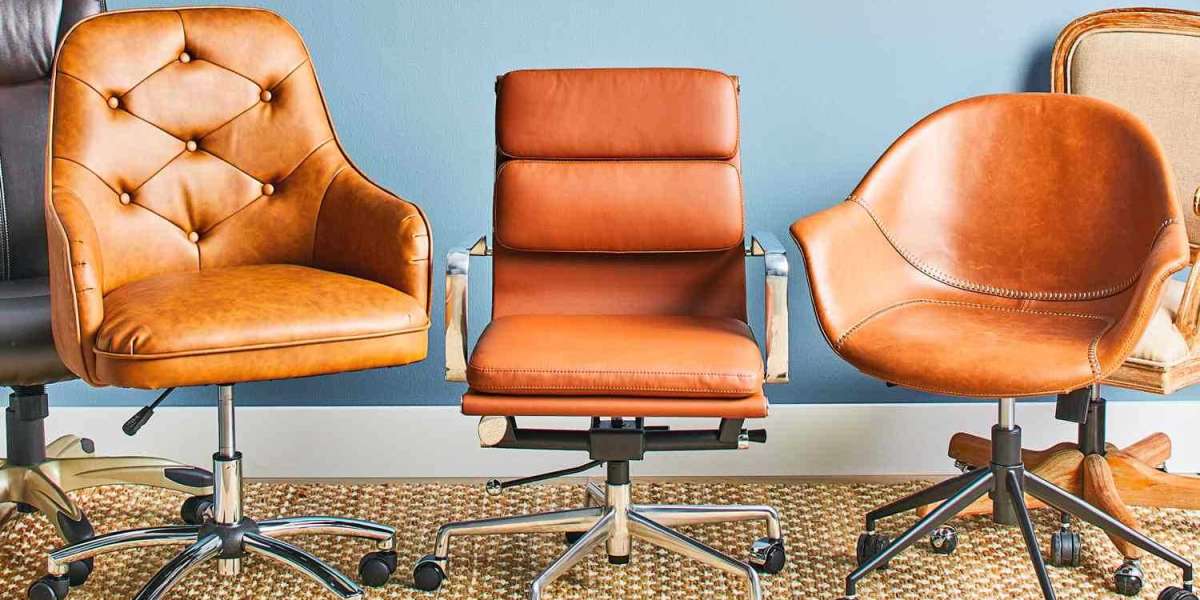Designing an eco-friendly modern office is not only a responsible choice for the environment but also a great way to create a healthier and more sustainable workspace for employees. Choosing environmentally conscious office furniture and materials can help reduce your carbon footprint while promoting well-being and productivity. Here are some eco-friendly furniture and design solutions for the modern office:
1. Sustainable Materials
- Recycled and Upcycled Furniture: Furniture made from recycled materials, such as reclaimed wood, metal, and plastic, is a great way to reduce waste and promote sustainability. Many manufacturers offer upcycled or reclaimed furniture that retains durability and style while minimizing environmental impact.
- Examples:
- Desks and tables made from reclaimed wood or recycled materials from brands like Emeco or Rework Office Furniture.
- Recycled plastic chairs, such as those made from ocean-bound plastics, are both durable and eco-friendly.
- FSC-Certified Wood: Furniture made from FSC (Forest Stewardship Council) certified wood ensures that the wood comes from responsibly managed forests. This guarantees that the materials used are harvested sustainably without harming ecosystems or contributing to deforestation.
- Examples:
- FSC-certified wood desks, shelves, and storage units from sustainable furniture companies like Thos. Moser or Urban Woods.
- Bamboo furniture is an eco-friendly alternative to traditional wood, as bamboo grows quickly and regenerates without the need for replanting.
2. Energy-Efficient Lighting
LED Lighting: LED lights use significantly less energy than traditional incandescent bulbs, making them an eco-friendly choice for modern offices. They last longer, produce less heat, and come in a variety of color temperatures to suit different work environments.
Examples:
- Install energy-efficient LED desk lamps and overhead lights to reduce power consumption.
- Motion-sensor lighting systems can further reduce energy usage by automatically turning off when not in use.
Natural Lighting: Maximize the use of natural light to reduce the need for artificial lighting. Large windows, skylights, and open office layouts that allow sunlight to penetrate the workspace can significantly cut down on energy usage while boosting employee morale.
Examples:
- Office layouts that prioritize open spaces and glass partitions for natural light to flow throughout the workspace.
- Solar window shades or reflective surfaces can help enhance natural light while reducing glare.
3. Non-Toxic and Low-VOC Materials
Low-VOC Paints and Finishes: Volatile Organic Compounds (VOCs) found in paints, finishes, and adhesives can release harmful chemicals into the air, contributing to indoor air pollution. Opt for furniture made with low-VOC paints, varnishes, and adhesives to create a healthier office environment.
Examples:
- Use low-VOC paints from brands like Benjamin Moore’s Eco Spec or Sherwin-Williams’ Harmony line for any office renovations or wall touch-ups.
- Eco-friendly wood finishes from companies like ECOS Paints ensure that desks, chairs, and shelving units are free from harmful emissions.
Non-Toxic Fabrics: Choose chairs, sofas, and cushions made from non-toxic, organic materials like cotton, wool, or hemp that have not been treated with harmful chemicals. Many eco-friendly furniture manufacturers use plant-based dyes and untreated natural fibers to create safe and sustainable products.
Examples:
- Upholstered office chairs or lounge seating made from organic cotton, wool, or hemp, such as those offered by brands like Medley or Simbly.
- Opt for natural, hypoallergenic materials like cork for pinboards or desk organizers.
4. Modular and Long-Lasting Furniture
Durable and Timeless Design: Choosing high-quality furniture that is built to last reduces the need for frequent replacements, lowering overall waste and environmental impact. Opt for classic designs that can remain stylish and functional for years to come, ensuring longevity.
Examples:
- Herman Miller’s Eames chairs and desks are known for their timeless design and durability, making them long-lasting and sustainable investments.
- Steelcase offers durable, modular office systems that can be reconfigured and expanded as needed, reducing the need for new furniture purchases.
Modular Furniture: Modular systems allow for easy reconfiguration as the office evolves. This flexibility reduces the need for new furniture purchases and ensures that the office can grow and change without creating unnecessary waste.
Examples:
- Modular desks and storage units from brands like Knoll or Haworth provide flexibility and can be reconfigured to accommodate different office layouts.
- Movable walls and partitions, such as those from DIRTT Environmental Solutions, allow for adaptable spaces that can be changed without demolition or waste.
5. Ergonomic and Eco-Friendly Chairs
Recycled Materials: Many modern ergonomic office chairs are made from sustainable and recycled materials, combining comfort with eco-friendly practices. Look for chairs made with recycled plastics, metals, or sustainably sourced fabrics.
Examples:
- The Herman Miller Aeron chair, made with over 50% recycled materials, is an ergonomic and eco-friendly option for office seating.
- Chairs like the Steelcase Series 1 are made from sustainable materials and designed to be easily disassembled for recycling at the end of their lifespan.
Cradle-to-Cradle Certification: Some manufacturers offer furniture that is Cradle-to-Cradle certified, meaning the products are designed with sustainability in mind from the materials to the manufacturing process, and can be fully recycled or repurposed at the end of their life.
Examples:
- Cradle-to-Cradle certified chairs and furniture from brands like Humanscale or Herman Miller ensure that products meet strict environmental standards.
6. Eco-Friendly Flooring
Sustainable Flooring Options: Opt for eco-friendly flooring materials such as bamboo, cork, or linoleum, which are renewable and biodegradable. These materials not only contribute to a healthier office environment but also add a modern, stylish look to your workspace.
Examples:
- Bamboo and cork flooring are highly sustainable options as they are rapidly renewable and naturally resilient.
- Linoleum, made from natural materials like linseed oil and jute, is biodegradable and durable, making it a great eco-friendly choice.
Carpet Tiles: Consider installing carpet tiles made from recycled or recyclable materials. Carpet tiles can be replaced individually, reducing waste and costs when only small areas need repair or updating.
Examples:
- Interface offers carpet tiles made from recycled materials that can be easily replaced without the need for full carpet replacements.
7. Green Certifications and Eco-Labels
- Certifications to Look For: When shopping for office furniture, look for eco-labels and certifications that ensure sustainable practices, such as GREENGUARD, Cradle-to-Cradle, FSC, and BIFMA Level certification. These labels guarantee that the products meet environmental and sustainability standards.
- Examples:
- Look for furniture with GREENGUARD certification, which ensures low chemical emissions and a healthier indoor air quality.
- BIFMA Level certification ensures that the furniture meets strict environmental and social responsibility standards in manufacturing.
8. Biophilic Design and Natural Elements
Plants and Green Spaces: Incorporate plants into your office design to promote a connection with nature, improve air quality, and reduce stress. Green walls, potted plants, or even indoor trees can create a calming, eco-friendly office environment.
Examples:
- Vertical gardens or green walls from companies like Sagegreenlife or LiveWall add greenery without taking up floor space.
- Desk plants like succulents or ferns improve air quality and bring a touch of nature into individual workspaces.
Natural Materials and Textures: Integrate natural materials such as wood, stone, or cork into your office design to create a biophilic environment that enhances productivity and well-being.
Examples:
- Use wood finishes for desks, shelves, or partitions to introduce natural elements into the office.
- Corkboard wall panels or bamboo desk accessories are sustainable ways to add texture and natural beauty to the space.
9. Energy-Efficient Office Equipment
- Energy Star Appliances: When selecting office equipment like computers, printers, or refrigerators, opt for Energy Star-rated models that use less energy and reduce utility costs. This not only lowers your carbon footprint but also saves on energy bills.
- Examples:
- Energy-efficient printers, monitors, and computers from brands like HP or Dell with Energy Star certification.
- Smart power strips that automatically shut off equipment when not in use, reducing energy waste.
10. Zero-Waste and Recycling Programs
- Office Recycling: Set up comprehensive recycling stations for paper, plastics, and electronic waste to encourage employees to dispose of materials responsibly. Many furniture manufacturers also offer take-back programs to recycle or refurbish old furniture.
- Examples:
- Encourage a paperless office by using digital documentation and cloud storage instead of printing.
- Partner with recycling programs that accept used furniture, electronics, and other office supplies, ensuring that materials are disposed of responsibly.
Conclusion
Creating an eco-friendly modern office requires thoughtful choices in furniture, materials, and design that prioritize sustainability and the well-being of employees. By investing in durable, recyclable, and non-toxic office furniture, incorporating natural elements, and reducing energy consumption, you can create a workspace that is not only stylish and functional but also environmentally responsible. These eco-friendly solutions help contribute to a greener future while promoting a healthier and more productive office environment.








